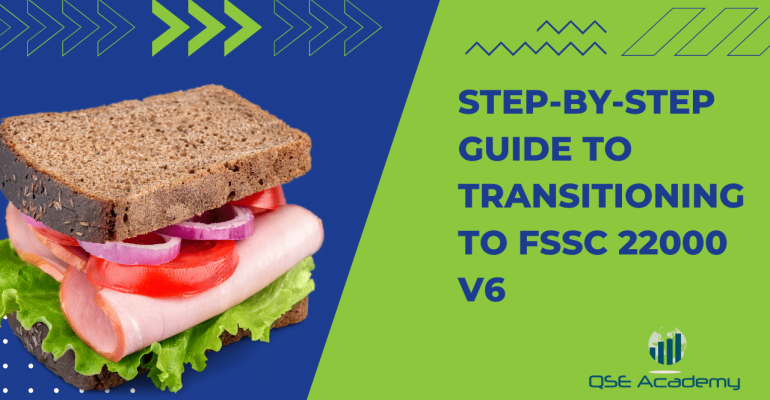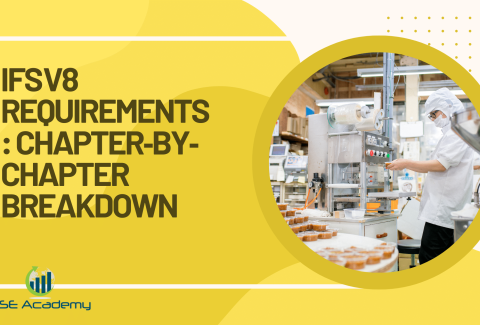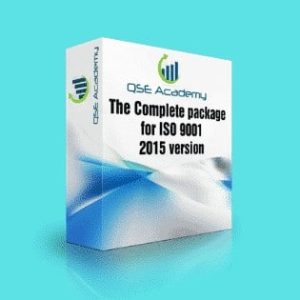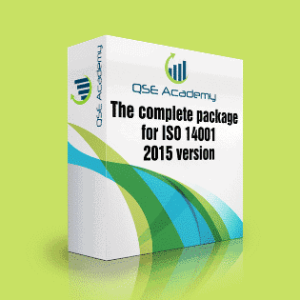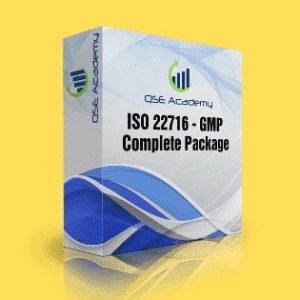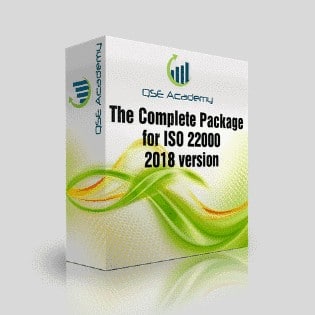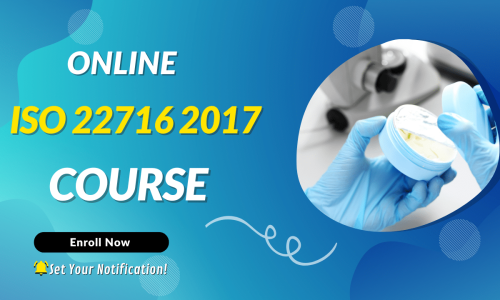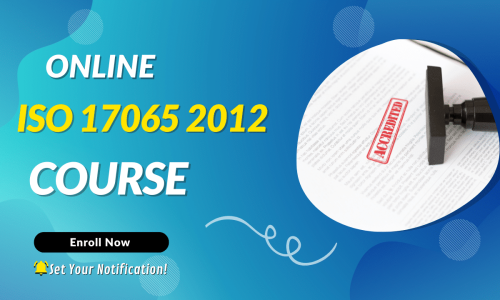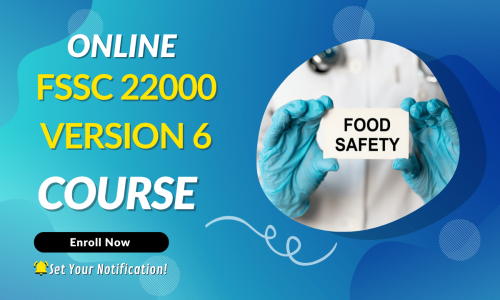Step-by-Step Guide to Transitioning to FSSC 22000 V6
Last Updated on October 13, 2025 by Hafsa J.
Step-by-Step Guide to Transitioning to FSSC 22000 V6
I’ll be honest—every time a new version of a standard like FSSC 22000 comes out, I see the same thing: teams freeze. Not because they don’t care, but because they’re not sure where to even begin.
And I get it. Version 6 is a big one. It doesn’t just ask you to tweak a few SOPs or slap a new heading on your food safety manual. It digs into your culture, how you manage risk, how you track food waste, and even how your equipment gets validated.
In my work with food companies—ranging from small, fast-growing bakeries to multinational production facilities—I’ve helped guide dozens of teams through standard transitions just like this. And here’s what I’ve learned: the earlier you start, the easier it is. The more your team is involved, the fewer surprises you’ll get during the audit. And no, you don’t need a massive overhaul—you just need a smart plan.
That’s what this guide is for. I’m going to walk you through the transition process step by step. From gap analysis to audit day prep, you’ll see what needs to happen, who should be involved, and how to make changes that actually stick.
Let’s make this transition practical, manageable, and even—dare I say—kind of empowering.
Ready to dive in? Let’s take it one step at a time.
Understand the Key Changes First
Before you start adjusting procedures or retraining your team, you need a clear picture of what’s actually changed in Version 6. This is where a lot of teams go wrong—they jump straight into rewriting documents without fully understanding the intent behind the new requirements.
So, what’s new?
You’ll see a heavier emphasis on things like:
-
Food safety and quality culture
-
Updated Codex HACCP principles
-
Equipment validation before use
-
Documented strategies for food loss and waste
-
Enhanced allergen control and environmental monitoring
Understanding these shifts will help you avoid treating the transition like a paperwork exercise—and start treating it like a real improvement to your system. That shift in mindset is the difference between passing the audit and actually benefiting from the changes.
Step 1: Conduct a Gap Assessment
Start here. A gap assessment tells you where you stand—and what still needs work.
In simple terms, you’re comparing your current food safety system (built around Version 5.1) to what Version 6 expects. This isn’t just a box-checking task. Done well, it gives you a realistic, focused transition plan.
Here’s what’s worked for my clients:
-
Use the official Version 6 requirements checklist (or a tool like our simplified audit template).
-
Do it as a team. Bring in your QA lead, sanitation supervisor, maybe even someone from HR or maintenance.
-
Be honest. If something’s only technically documented but not actually practiced—mark it as a gap.
I recently worked with a mid-sized snack food company that thought they were 90% aligned. After a true gap analysis, we found they had no real documentation for how they measured food safety culture. Fixing that early saved them from a major non-conformity later.
Step 2: Build a Transition Team
Trust me—this is not a solo project.
One of the most common mistakes I see? Assigning the transition to the QA manager and calling it a day. Version 6 impacts operations, sanitation, HR, procurement—you need input from all of them.
A good transition team usually includes:
-
QA or Food Safety Manager
-
Operations Lead
-
Maintenance/Engineering
-
HR or Training Coordinator
-
Procurement or Supplier Quality
You don’t need to form a task force with weekly meetings forever. But you do need a kickoff meeting where everyone understands the updates and their role in the transition.
Here’s what I like to ask during that first meeting:
-
Where are we already doing some of this (but not documenting it)?
-
What’s going to require real behavior change?
-
Who needs to be trained, and on what?
Having this team in place from day one ensures changes are understood, adopted, and maintained—not just written down.
Step 3: Prioritize and Plan
Now that you know what needs to change—and you’ve got the right people at the table—it’s time to get organized. But don’t try to fix everything all at once. That’s a fast track to burnout and half-finished projects.
Instead, break your transition down into manageable pieces. Think in terms of priorities:
-
What impacts audit readiness the most?
-
What requires the biggest process changes?
-
Where can you get quick wins to build momentum?
I worked with a frozen food manufacturer who color-coded their priorities: red for critical (like hazard analysis updates), yellow for moderate (like updating supplier questionnaires), and green for minor adjustments. That simple visual helped keep everyone on track—and lowered the stress level across the team.
Create a basic timeline. Assign owners for each task. Make sure people actually have time blocked off to work on them. That’s how you move from “we need to” to “we’re doing it.”
Step 4: Update Documentation and Procedures
Once your plan is in place, it’s time to roll up your sleeves and revise your system. This is where the work gets tactical.
But here’s the trick: Don’t just update for compliance—update for clarity.
In other words, write your procedures in a way that reflects what actually happens on the floor.
Start by reviewing:
-
Standard Operating Procedures (SOPs)
-
Prerequisite Program (PRP) documentation
-
HACCP plans
-
Risk assessments
-
Internal audit checklists
-
Training records
-
Supplier approval criteria
One team I helped noticed that their allergen control SOP hadn’t been revised in two years—even though their product line had changed. That update wasn’t just about staying compliant—it was about protecting customers from real cross-contact risks.
And if your procedures still use vague phrases like “verify regularly” or “as needed,” this is the time to get specific. Version 6 expects consistency and traceability, and vague language won’t cut it anymore.
Step 5: Train Your People
Let’s be real—your system is only as strong as the people running it. And if your team doesn’t understand the “why” behind the changes, you’ll struggle to make them stick.
The good news? You don’t need a day-long training marathon.
The best approach I’ve seen is targeted, role-specific training delivered in short sessions.
For example:
-
Line leaders learn about updated cleaning validation procedures
-
Warehouse staff are briefed on revised allergen zoning
-
QA gets deeper training on the new hazard analysis structure
-
Managers review how to support and measure food safety culture
One company I worked with used ten-minute huddle talks once a week, each one focused on a single Version 6 change. By the end of the month, their team knew exactly what was expected—and why it mattered.
Don’t forget to document the training. Sign-in sheets, learning objectives, and even informal quizzes go a long way during an audit.
Step 6: Validate and Test Your Changes
Once you’ve updated your documents and trained your team, the next step is making sure it actually works. This is where a lot of companies slip—they make all the updates on paper, but don’t test the effectiveness in real operations.
Validation isn’t just a buzzword in Version 6—it’s expected. That includes validating:
-
Cleaning and sanitation procedures
-
Equipment setup and maintenance routines
-
New or revised HACCP controls
-
Allergen control effectiveness
-
Food waste tracking systems
In my experience, one of the most effective tools here is a mock audit. Bring in an internal auditor—or even someone from another department—for a fresh set of eyes. If you can, have a consultant review your transition work before the actual audit. One of our clients caught a major documentation gap this way, giving them weeks to fix it instead of scrambling post-audit.
And don’t forget environmental monitoring and traceability exercises. Run through scenarios. See what breaks down. That’s where the real learning (and improvement) happens.
Step 7: Schedule Your Audit and Communicate the Changes
Once everything’s in place—and you’ve tested it—it’s time to schedule your audit. But don’t wait until the last minute to contact your certification body. Give them plenty of notice that you’re transitioning to Version 6, especially if your next surveillance or recertification audit is coming up soon.
Also, prepare your team for the audit conversation. Auditors will ask how Version 6 has been integrated into daily practice. That includes questions about:
-
Food safety culture metrics
-
How waste is being tracked and managed
-
How updated Codex HACCP principles are being applied
-
Validation evidence for new equipment or procedures
We helped one facility create a simple “audit readiness binder” that held a copy of their gap analysis, updated SOPs, training logs, validation reports, and culture survey results. During the audit, it saved time, reduced confusion, and showed the auditor that they took Version 6 seriously.
The final piece? Celebrate the effort. This kind of transition takes focus and teamwork. A simple acknowledgment—an email, a thank-you lunch, even a shoutout in the company newsletter—goes a long way in reinforcing that food safety isn’t just a compliance task—it’s part of your culture.
Pro Tips from the Field
Tip 1: Don’t wait for perfection—just start
Some companies delay because they want every answer before taking action. But real progress happens by doing, not overthinking. Start with your gap analysis and let that guide your next steps. Imperfect action is better than perfect procrastination.
Tip 2: Keep documentation lean and useful
I’ve seen teams write twenty-page procedures that no one reads. Focus on clarity over complexity. If your procedures are easy to follow, your team is more likely to stick to them—and auditors will appreciate it too.
Tip 3: Use audit prep as a coaching opportunity
Don’t just “drill” your team for the audit. Use it to build confidence. Walk them through likely questions, explain the purpose behind changes, and make it feel collaborative—not punitive.
Tip 4: Track small wins during the transition
If you’re managing a multi-week rollout, track your wins along the way. Maybe you updated all SOPs this week, or got two departments fully trained. Celebrating those mini-milestones keeps your team engaged and motivated.
Tip 5: Create a simple transition dashboard
Even just a one-page tracker with major tasks, owners, and status updates can keep your transition on track. I helped a team use a color-coded Excel sheet—and they said it reduced status meeting time by half.
Common Mistakes to Avoid
Treating the transition like a checklist exercise
Version 6 isn’t just about ticking boxes—it’s about building a better food safety system. If you only focus on the documentation, you’ll miss the culture and behavior changes that matter most.
Leaving it all to QA
This is a team sport. When only one person owns the transition, things get missed—and burnout creeps in fast. Pull in operations, HR, and other key roles early.
Training too late—or not at all
Your team can’t follow new expectations if they don’t understand them. Build training into your timeline, and keep it practical. Show how the changes affect real tasks—not just policies.
Skipping validation because “we’ve always done it this way”
Auditors won’t accept tradition as evidence. You need to show that updated controls are effective through testing and records, not just confidence.
Frequently Asked Questions
Q: How long does the transition usually take?
That depends on your size and complexity, but most companies need at least two to four months to fully align—especially if process changes or culture metrics are involved. Starting early is the key.
Q: What’s the latest date we can complete our audit under Version 5.1?
All audits must follow Version 6 starting April 1, 2024. Certificates to Version 5.1 will expire by March 31, 2025, so it’s smart to complete your transition well before that.
Q: Do we need to hire a consultant?
Not always. If your internal team has a good grasp of the changes and enough time to manage the project, you may be fine. But if resources are tight or you want an outside perspective, a short consulting engagement (even just for a gap review) can make a big difference.
Make the Transition Work for You
If there’s one thing I want you to take away from this guide, it’s this:
You don’t need to overhaul your entire system overnight—but you do need to start with intention.
FSSC 22000 Version 6 isn’t just a regulatory requirement. It’s a chance to build a stronger, more resilient food safety system. And when done right, this transition will improve more than your audit readiness—it’ll improve how your team works, communicates, and delivers on quality every day.
I’ve helped teams navigate transitions just like this, and I can tell you firsthand: the ones who succeed aren’t perfect—they’re just prepared. They understand the changes, build a plan, involve the right people, and stay flexible when challenges pop up.
If you’ve made it this far, you’re clearly committed. Now’s the time to take action.
Need a hand getting started?
You can download our free FSSC 22000 Version 6 Gap Analysis Checklist or schedule a 30-minute consultation at QSEAcademy.com. Whether you’re halfway there or just starting out, we’ll help you build a transition plan that works for your business.
You’ve got this—and we’ve got your back.
Whether it’s ISO 9001, ISO 22000, or the cosmetics-focused ISO 22716, I’ve spent my career I’m not here to call myself an expert—I prefer “enthusiast” because I truly love what I do. When I’m not writing about standards, you’ll probably find me playing Piano 🎹, connecting with people, or diving into my next big project💫. I’m an engineer specialized in the food and agricultural industry
make ISO standards less intimidating and more approachable for everyone.
turning complex jargon into clear, actionable steps that businesses can actually use.
There’s something incredibly rewarding about helping people navigate food safety and quality management systems
in a way that feels simple, practical, and even enjoyable.
I have a Master’s in QHSE management and over 12 years of experience as a Quality Manager
I’ve helped more than 15 companies implement ISO 9001, ISO 22000, ISO 22716, GMP, and other standards
My clients include food producers, cosmetics manufacturers, laboratories, and service companies
I believe quality systems should be simple, useful, and efficient.

